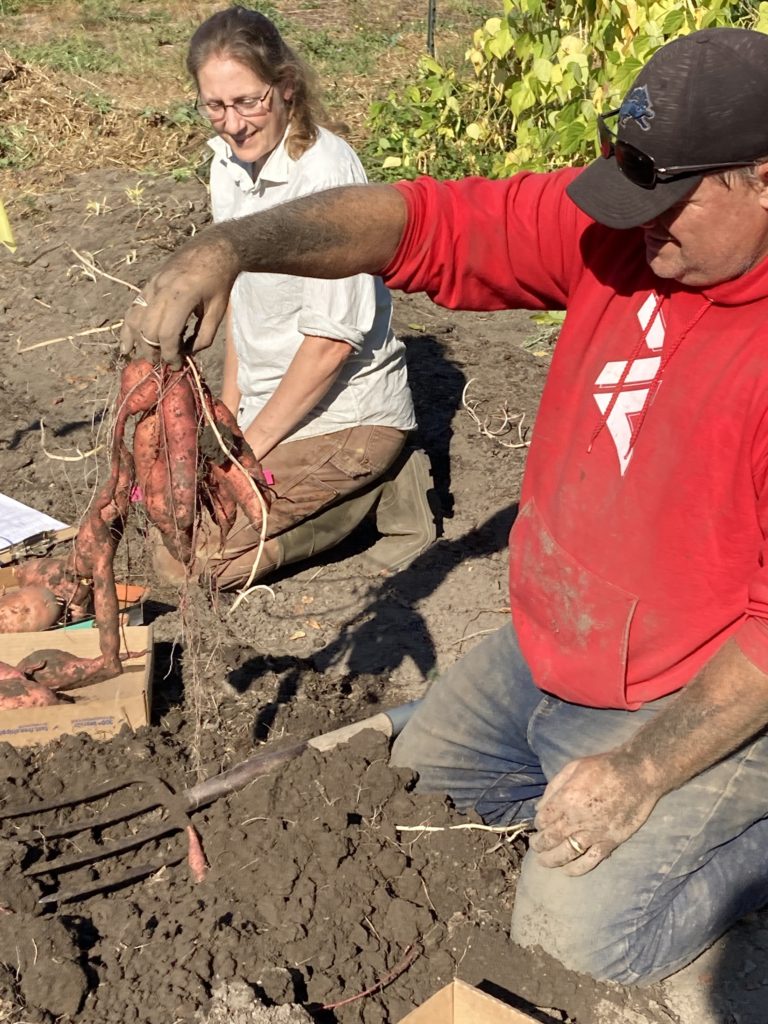
Sweetpotato Project
We hosted a demonstration at the farm this week for propagating and planting sweetpotatoes. Clallam County WSU Extension is sponsoring a second year of sweetpotato trials to encourage production on the Olympic Peninsula. The program is funded through a grant from Western SARE (Sustainable Agriculture Research and Education).
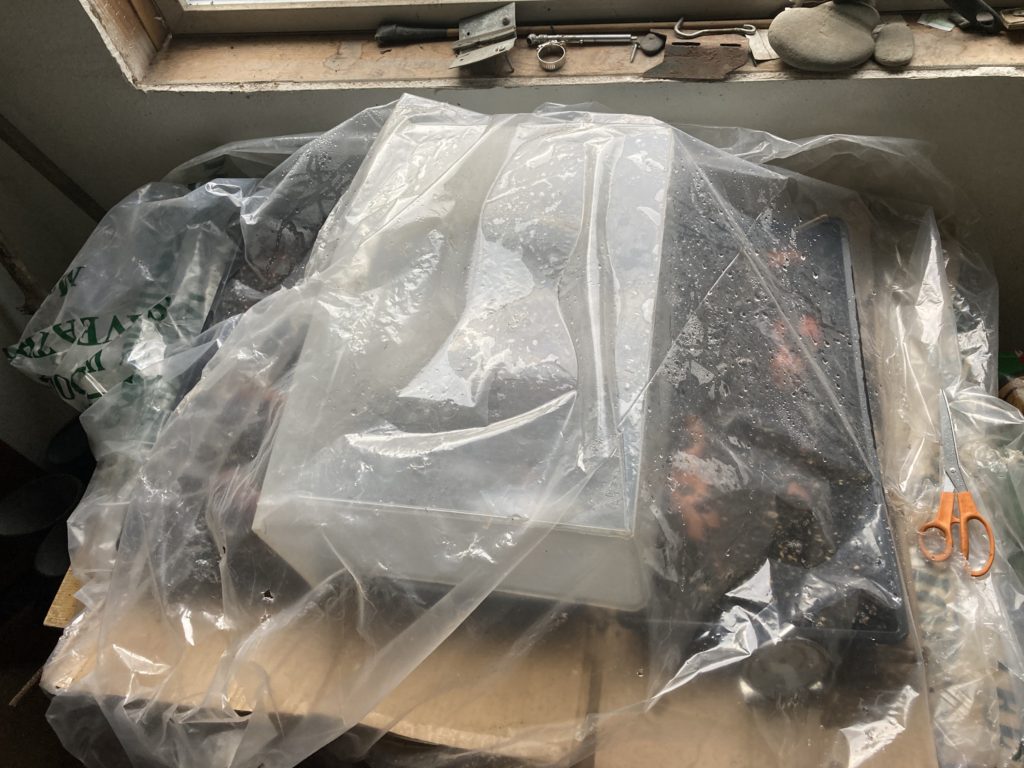
The process of sweetpotato production begins in the spring by propagating slips from a “mother” sweetpotato. WSU Regional Small Farms IPM Specialist, Laurel Moulton, who heads the Sweetpotato Project, delivered 3 varieties of potatoes: Beaureguard, Covington, and Cascade (a wireworm resistant variety recently released from the USDA-ARS sweetpotato breeding program that has shown promise as a productive variety to grow in western WA).
After receiving the potatoes from Laurel in early April, we covered them in shallow trays of fertilized potting soil with a plastic cover to maintain the desired humidity. We placed the sweetpotatoes in a warm spot with southern exposure and added a heat pad underneath the potatoes to help keep the soil at the optimal temperature of 75-80 degrees F.
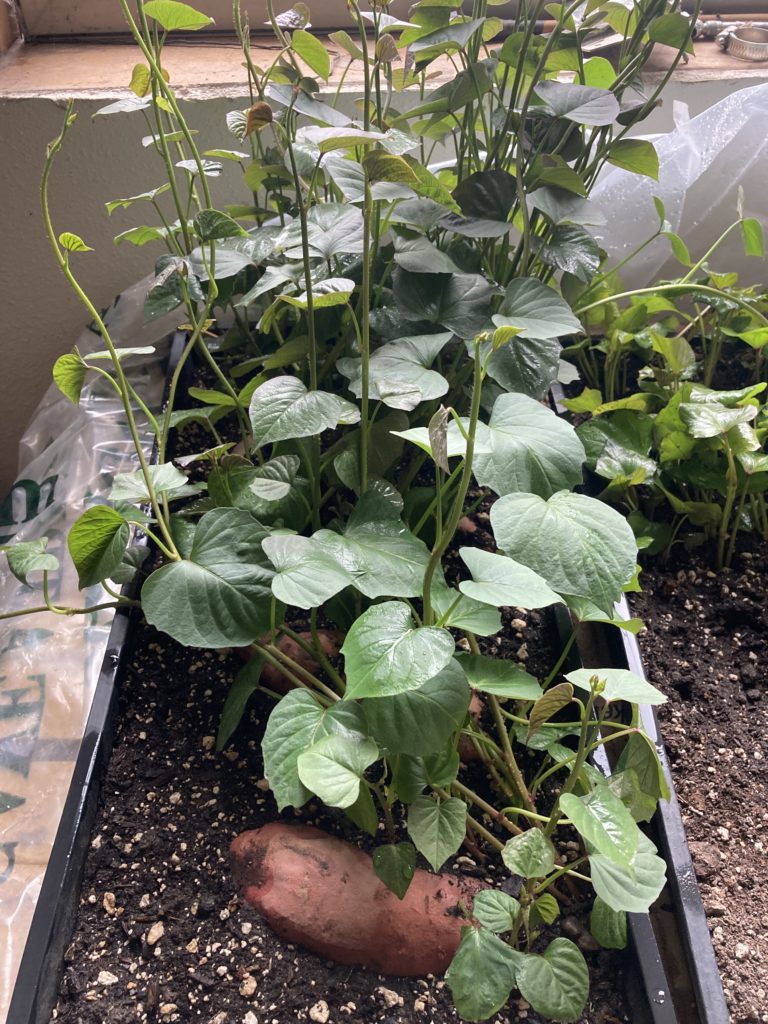
Within a week they were producing slips. By mid-May most of these slips were a foot long. At this point we were able to double the number of slips by snipping the top half off the slips and “planting” these cuttings directly into some fresh soil that was kept at the same warmth and humidity as with the previous propagation. It’s amazing how vigorously the plants grow. The photo below shows the transplanted cuttings a week later.
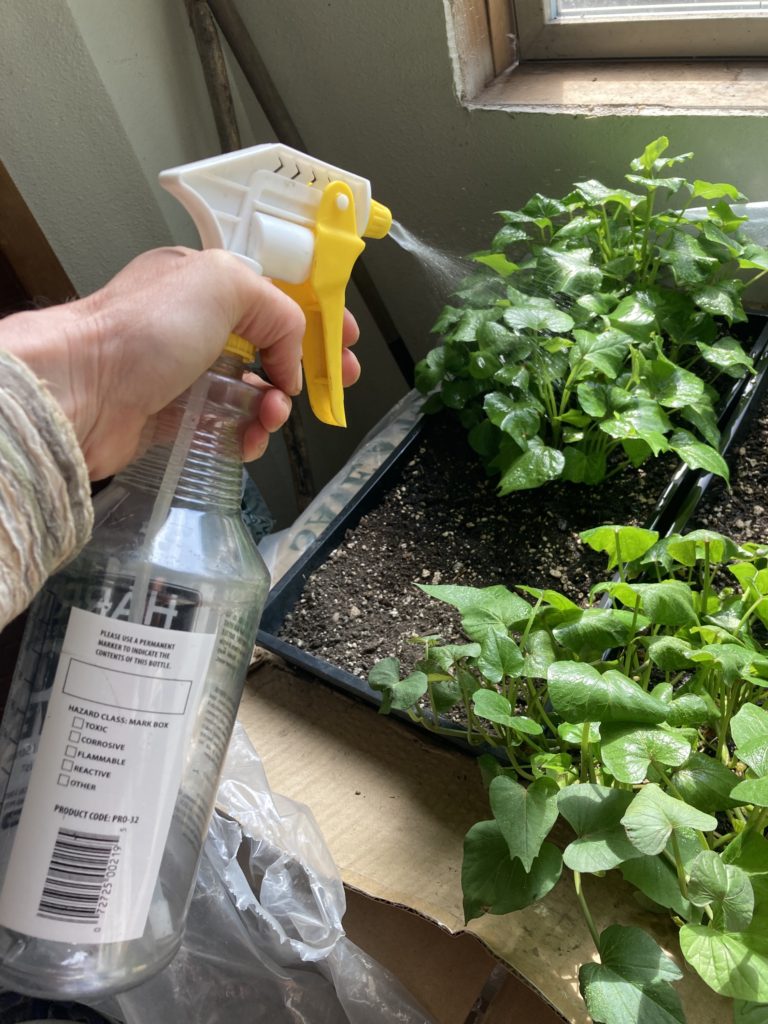
One of the potential strengths of the Olympic Peninsula for growing sweetpotatoes is our long days. The key is to maintain soil temperature in the 70’s for a long enough stretch in the summer/fall. To increase the soil temperature, we prepared our sweetpotato beds in early spring with large sheets of locally acquired, reused black plastic. Two rows of drip hose were enclosed beneath the plastic. Once the desired temperature has been reached (usually in early June) a row of cuttings can be planted with 12-inch spacing down the center of the bed, directly into the plastic a foot apart.
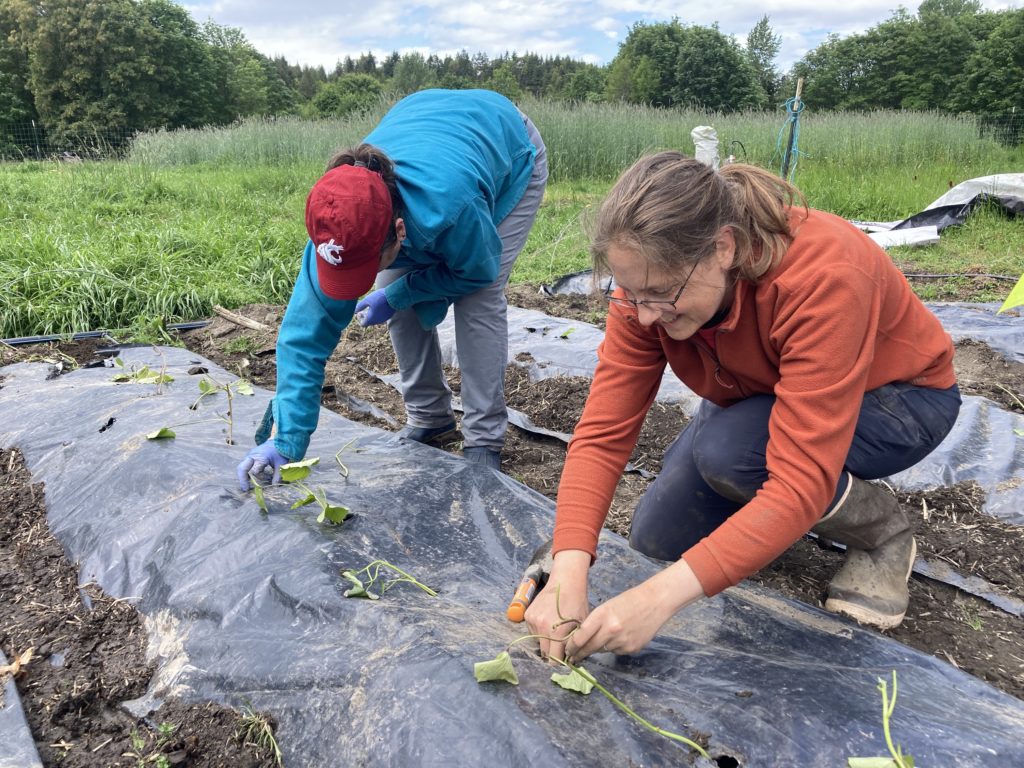
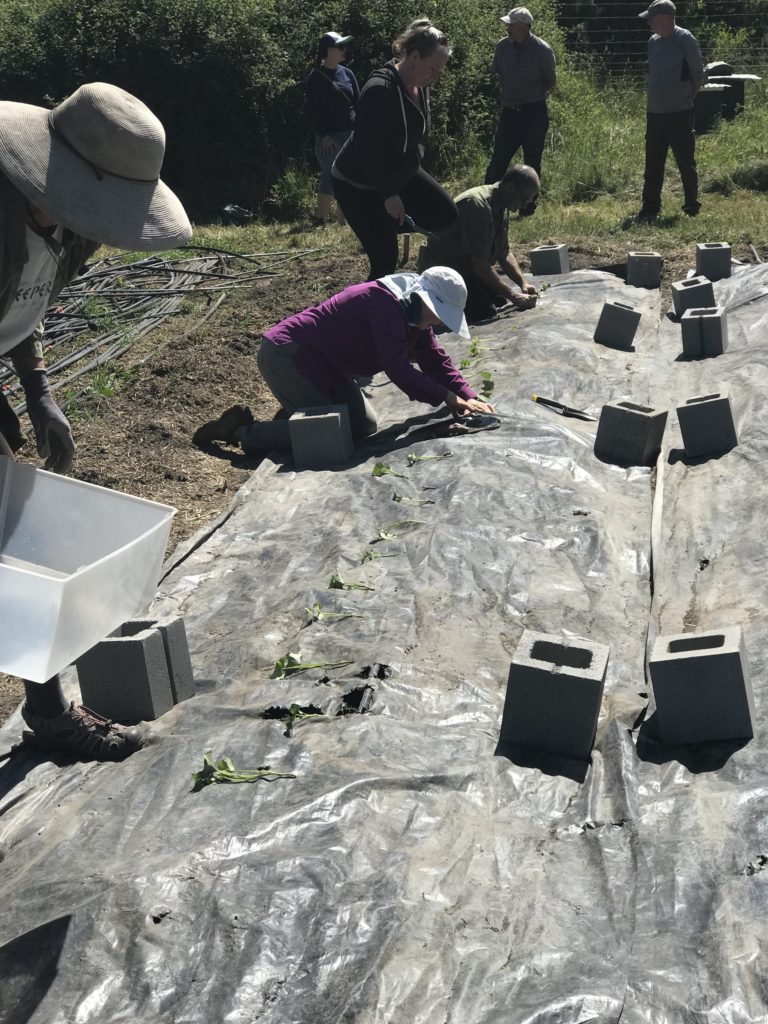
Here is a photo taken from last year’s beds in late August.
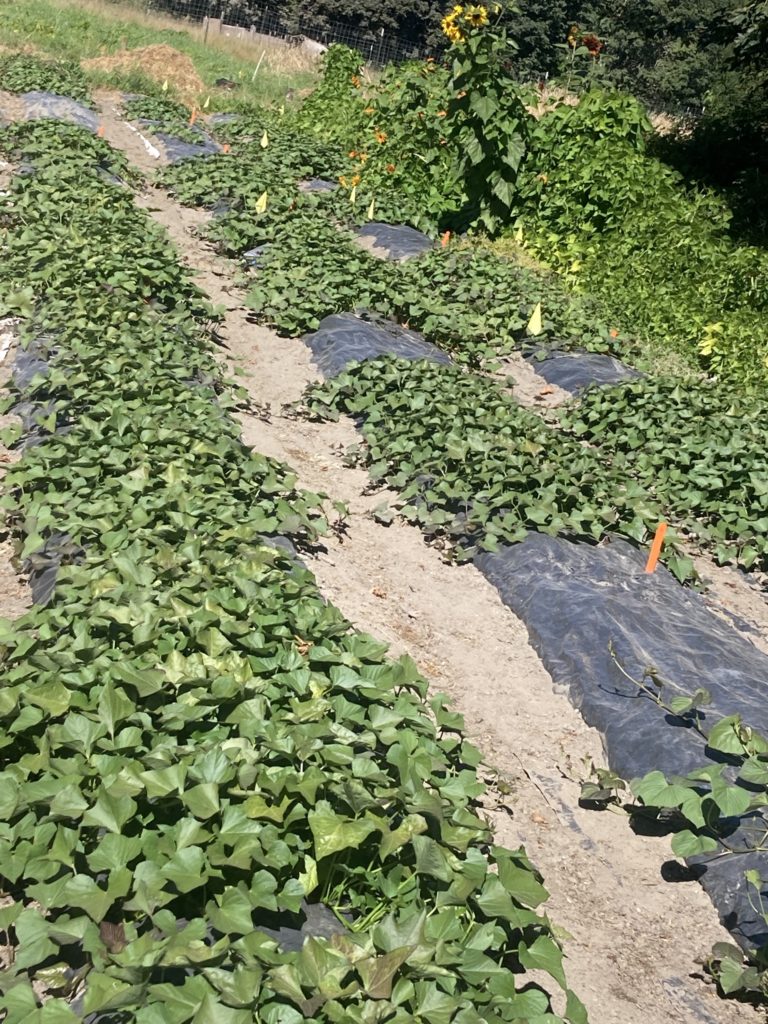
With the extended dry weather last fall we were able to comfortably delay the harvest until early October. The goal is to allow for the longest possible growing season while managing to harvest before the rains begin. The sweetpotatoes will cure much better if harvested dry. Although last summer had been cooler than normal, we achieved a decent harvest, and look forward to seeing what we can produce this year.

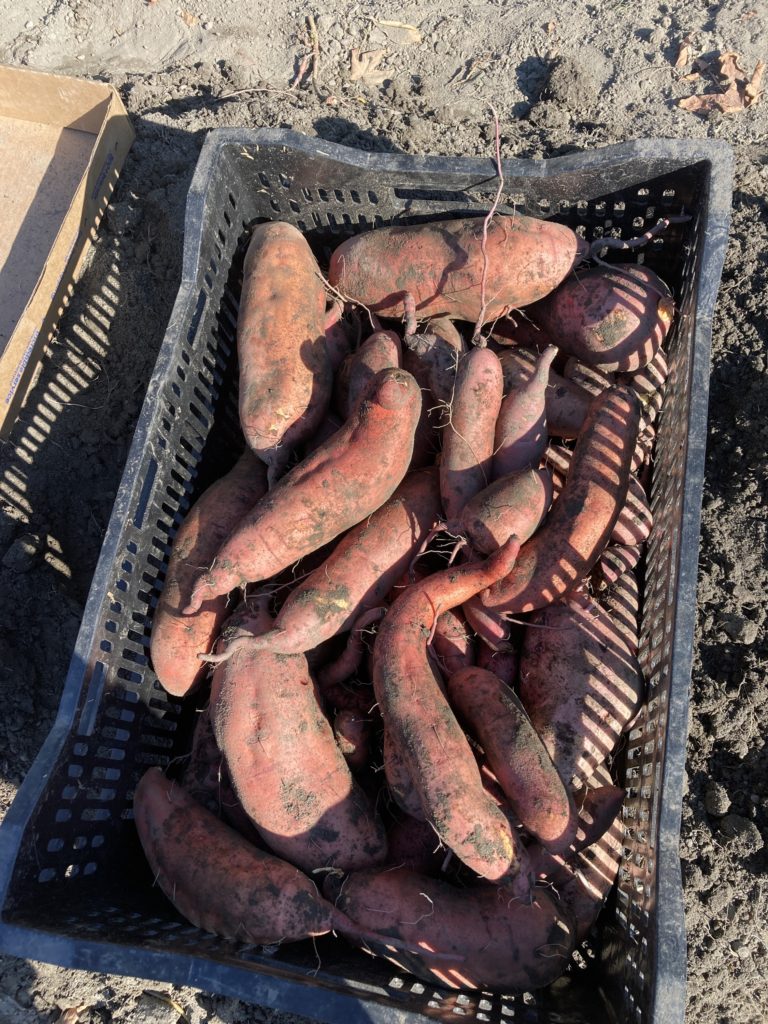
See flyer below for more information on growing sweetpotatoes locally .

